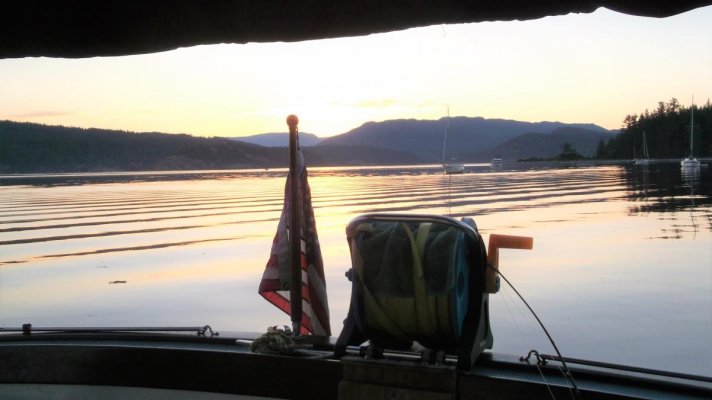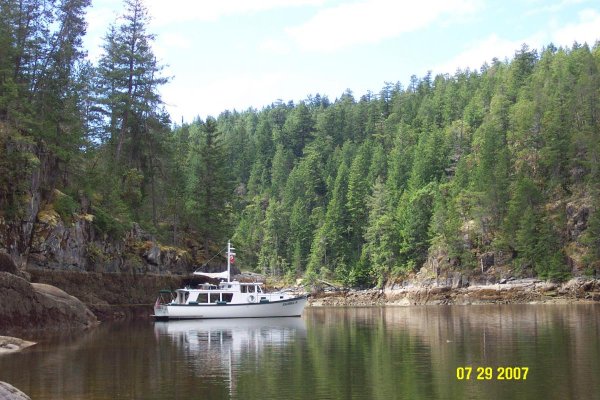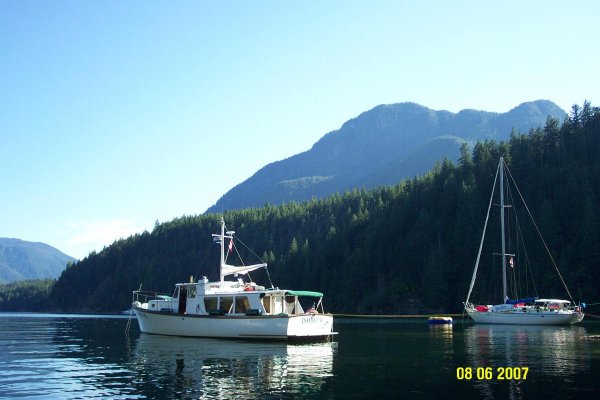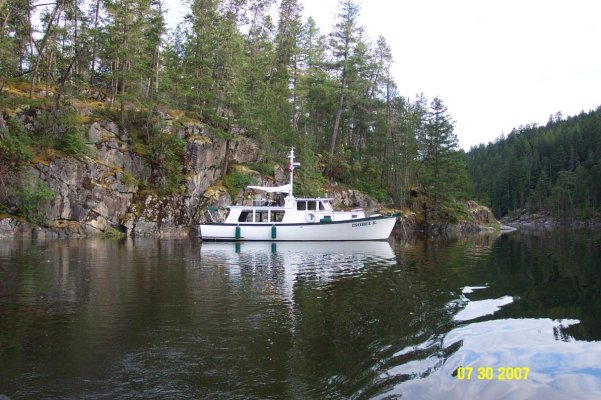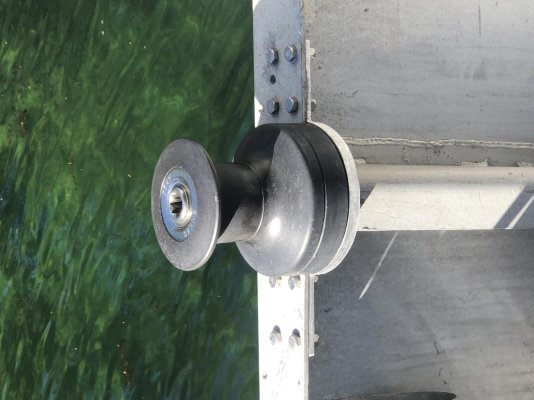We stern tie about 50% of the time when north of the gulf islands.
advantages: we can snug the boat into much tighter places - as already noted it is sometimes mandatory when an anchorage is popular or crowded.
since the boat is almost stationary when stern tied, I usually sleep pretty well as the anchor alarm will not sound with a tide shift.
disadvantage: if the wind comes up and a large obviously uninsured wooden derelict becomes dislodged and is heading toward you, you are pretty stuck. (another story for another time).
I use a reel to hold 300' of flat nylon webbing as shown in the pic.
Our procedure to deploy: (assumes little wind or current to fight)
anchor as usual 3:1 or better, predicting where the stern of the boat will lay is a bit of an artform, but comes with practice.
the dingy is ready, so tie the webbing to the dingy and back toward shore, when just about there, turn the dingy and land it. take the webbing and loop the end around a tree, rock or driftwood that is above the tideline.
here is where I depart from the previous method - I will tie a bowline to create a loop that is up to 50' from the tree - the idea is the knot will be in the water when it is time to depart.
The admirial will now take up the slack at the boat. - i will return to the boat, check depth and see if the anchor chain is about the right tension (note anchor chain angle in pics). any adjustment for tension is made at the stern tie.
When it is time to go, start the boat, hop in the dinghy, pull myself along the stern line with no need to start the motor, to the knot on the loop - this is hopefully in the water so no need to land the dingy.
signal the admiral to release slack, untie the knot, pull the loop into the dinghy as the admiral reels us back to the boat.
pull the anchor as usual.
sounds complex, but using this method, we can secure the boat in less than 5 min.
releasing is 3 min. plus pulling the anchor.
incidentally, we use hand signals, so no shouting.
since we use flat webbing, no bridle is necessary when using a live tree - unlike using regular line which will grind its way thru the bark.

